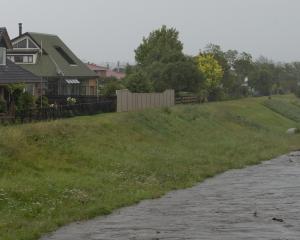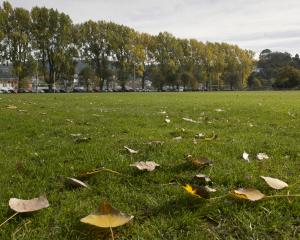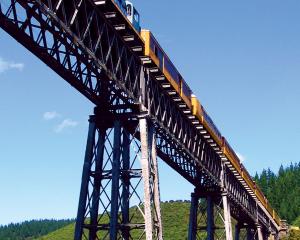They say St Clair Beach's sand has been disappearing consistently since the southern end of the beach was reshaped and a new sea wall of precast concrete panels was erected in front of an existing wall in 2004.
The ever-growing holes started appearing on Sunday, after the fill under part of the Esplanade walkway washed away when the bottom of the sea wall was exposed by spring tides that removed more than 1m of sand from the beach.
By yesterday morning, the holes were 4m-deep craters, and the hottest show in town.
As the sea continued to undermine big chunks of the walkway, hundreds of people dropped by to have a look at the holes either side of the St Clair Surf Life Saving Club's rescue boat launch ramp.
Surfers and residents said the wave and water-movement patterns since the new wall was constructed meant that sand washed away from the clubrooms end of the wall in bad weather was unable to resettle there in any quantity. South Coast Board Riders Association president Mark Stevenson was not surprised the sand level was so low the bottom of the wall was exposed in a spring tide.
He recalled holes had appeared before, about 15 years ago, and said he was not yet concerned about the stability of the clubrooms.
The council should plug the gap, but there were going to be continuing problems every spring tide unless the wall was moved back or dug deeper, he said.
''It's a white elephant, that wall, and it's going to cost a fortune.''
That the foot of the sea wall was exposed also came as no surprise to St Clair Surf Life Saving Club life member Graeme Newton, who said the club had told the council several times the low beach level was a serious issue.
The council responded it was in a ''holding pattern'' with regards to erosion, and seemed more focused on the dunes further along the beach than on the sand levels in front of the sea wall, he said.
He was not sure what could be done and, while something needed to be done, plugging the hole at the bottom of the wall would be a waste of time, he said.
''Nothing's bulletproof when it comes to the ocean.''
The club was going to meet last night to discuss how it would manage the temporary loss of the launch ramp, he said.
Katherine Greer, the owner of the Hydro Building on the Esplanade, said she felt there were major safety issues with the wall.
She had owned the building for 28 years and since the new wall went up there had been a noticeable difference, she said.
The issue was the placement of the wall, which she said was a ''failure''.
Waves smashing into the wall could now be felt as vibrations through buildings in the area, making it hard for people living and working there.
Accessing the water had become dangerous for surfers because the water was up against the wall most of the time.
The only solution was moving the wall back towards the buildings.
''The cost will be massive, but they are just going to have to do it.
''It's our city beach and it was amazing. It still should be.''
Her tenant, florist Carley Jones, said the Esplanade was one of Dunedin's attractions and it would be a shame if it was at risk.
She had been in her shop for three years and said the increasingly bad vibrations and booming from waves hitting the wall were a real concern for her.












